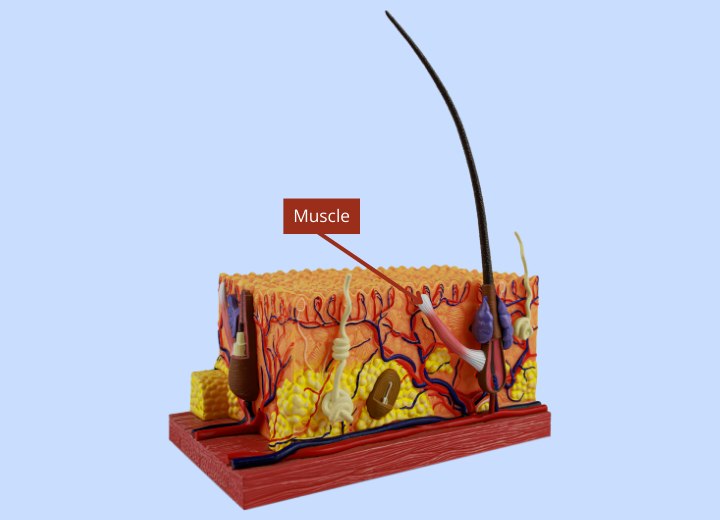Goosebumps

A: Goosebumps, scientifically called piloerection, are a fascinating aspect of our body's response to various stimuli.
The goosebump process begins with the activation of the sympathetic nervous system, the part of our autonomic nervous system responsible for the "fight or flight" response. When we experience emotions such as fear, excitement, or even cold temperatures, our body initiates a series of reactions intended to prepare us for action. At that moment, the complex interaction of neurotransmitters and hormones comes into play.
This reaction traces its origins to our evolutionary past. In animals, upright hairs make them appear larger, creating a more intimidating look and helping to deter potential threats. Although humans don't have the same fur as our animal counterparts, remnants of this evolutionary mechanism still exist and manifest as goosebumps.
The phenomenon of goosebumps is not exclusively reserved for fear. In the realm of emotions, music and other forms of art can also elicit the goosebump response. The power of a moving musical piece or a poignant scene in a film can trigger a cascade of emotions, leading to the same physiological reaction as a cold breeze or a frightening event.

Individual sensitivity varies, causing some people to get goosebumps more quickly than others. This sensitivity can be influenced by genetic factors, overall health, and even psychological predisposition. Goosebumps remind us of the intricate web of connections within our body, where physical and emotional domains converge.
©Hairfinder.com
See also:
How strong is hair?
What is hair made of and how does it grow?